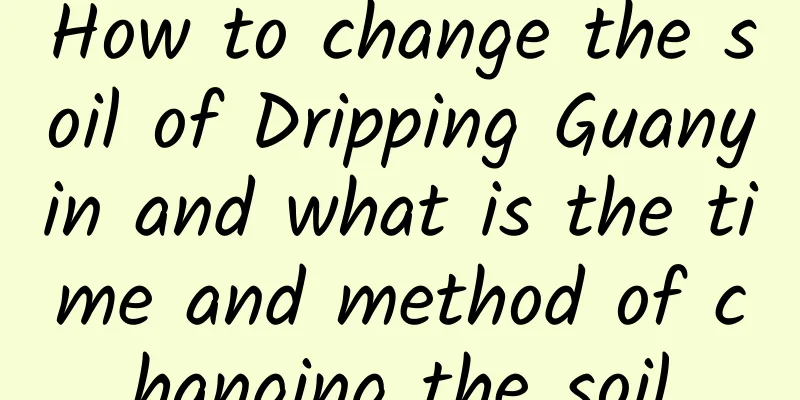How to change the soil of Dripping Guanyin and what is the time and method of changing the soil

When should the soil of the Dripping Guanyin be changed?It is generally more appropriate to change the soil of the weeping angel in spring and autumn every year, and avoid doing so when the temperature is low, otherwise it will be detrimental to the survival of the plant after changing the soil. The soil of the weeping angel should not be changed in summer, because the plant is in its vigorous growth period at this time. Any change of the soil will affect its normal growth and development, causing insufficient nutrients in the leaves and stems, leading to deformities or other abnormal growth. How to change the soil and pot of the weeping angelRemove from the pot : Before changing the soil for the weeping angel, water it less frequently so that it is easier to remove from the pot. Take the plant out of the original pot, remove the surrounding soil, and keep the soil next to the roots. Pruning : Use scissors to cut off the overlong and rotten roots of the plant. Be careful not to touch the normal roots. The dead and yellow leaves on the plant should also be cut off to avoid consuming more nutrients. Repotting : Put some soil in the prepared new flowerpot, then put the plant into the potting soil, cover it with soil, compact the soil near the roots of the plant with your hands, and water it thoroughly. Soil for replacing soil for Dripping GuanyinIt is better to use air-permeable and nutritious soil when changing the soil and repotting the weeping angel. It is best to use nutritious soil made from a mixture of multiple substrates, which will enable it to grow well and have a gratifying growth. The soil for the dripping GuanyinThe soil preparation for the weeping angel is relatively simple. Generally, peat soil, pond mud and coarse yarn can be mixed in the ratio of 2:2:1. The soil prepared in this way has very good air permeability, and an appropriate amount of base fertilizer can also be added for preparation. Precautions for changing the soil of Dripping Guanyin1. Before changing the soil of the weeping angel plant, water it less and cut off the rotten and overlong roots. When repotting, keep the soil around the roots. Do not fertilize immediately after repotting. Place it in a cool place for maintenance for a while. 2. If the soil in the pot is too wet and the quality of the soil is poor, you can consider changing all the soil. Remember that the soil should not be too wet and do not choose soil that is too sticky. Soil with good air permeability and nutrition is the best. |
Recommend
What is the method of hydroponics of green radish
1. What is the hydroponic method? The hydroponic ...
How to plant and raise Vitex negundo
1. How to plant 1. Prepare the potting soil: In o...
How to plant aloe vera with a broken head? Can aloe vera still be planted if its head is broken?
Aloe vera is a common flower in life and has a wi...
How to propagate purple pearl succulent and what to pay attention to
Purple Pearl Succulent Propagation Method Purple ...
How to water the potted Cyperus rotundus, adjust the watering time for good absorption!
Specific watering method summer The Cardinal Tetr...
What kind of Feng Shui effect does lily have?
Create Feng Shui for your home From the perspecti...
How to grow arrowroot more vigorously?
The perennial evergreen herb of the Marantaceae f...
Can succulents be watered with Coca-Cola? What are the benefits of watering succulents with Coca-Cola?
Can succulents be watered with Coke? Succulents c...
When is the best time to repot plants? What month is the best time to repot plants?
Plant repotting time The plant is growing slowly ...
How to grow Jucaishan succulent and make it bloom
The Money Plant is an evergreen succulent plant. ...
Diseases and prevention methods of Eustoma
Diseases of Eustoma: Stem blight symptom Stem bli...
How often should potted morning glory be watered?
1. Spring watering As for morning glory, it can u...
Women are afraid of marrying the wrong person, and flowers are afraid of choosing the wrong pot.
orchid Orchids have fleshy roots with a relativel...
The efficacy and function of mint, how to eat mint leaves
1. Efficacy and Function 1. Strengthen the stomac...
The best time to supplement calcium for grapes (what calcium fertilizer is best for calcium supplementation for grapes)
In agricultural cultivation, calcium is a trace e...









